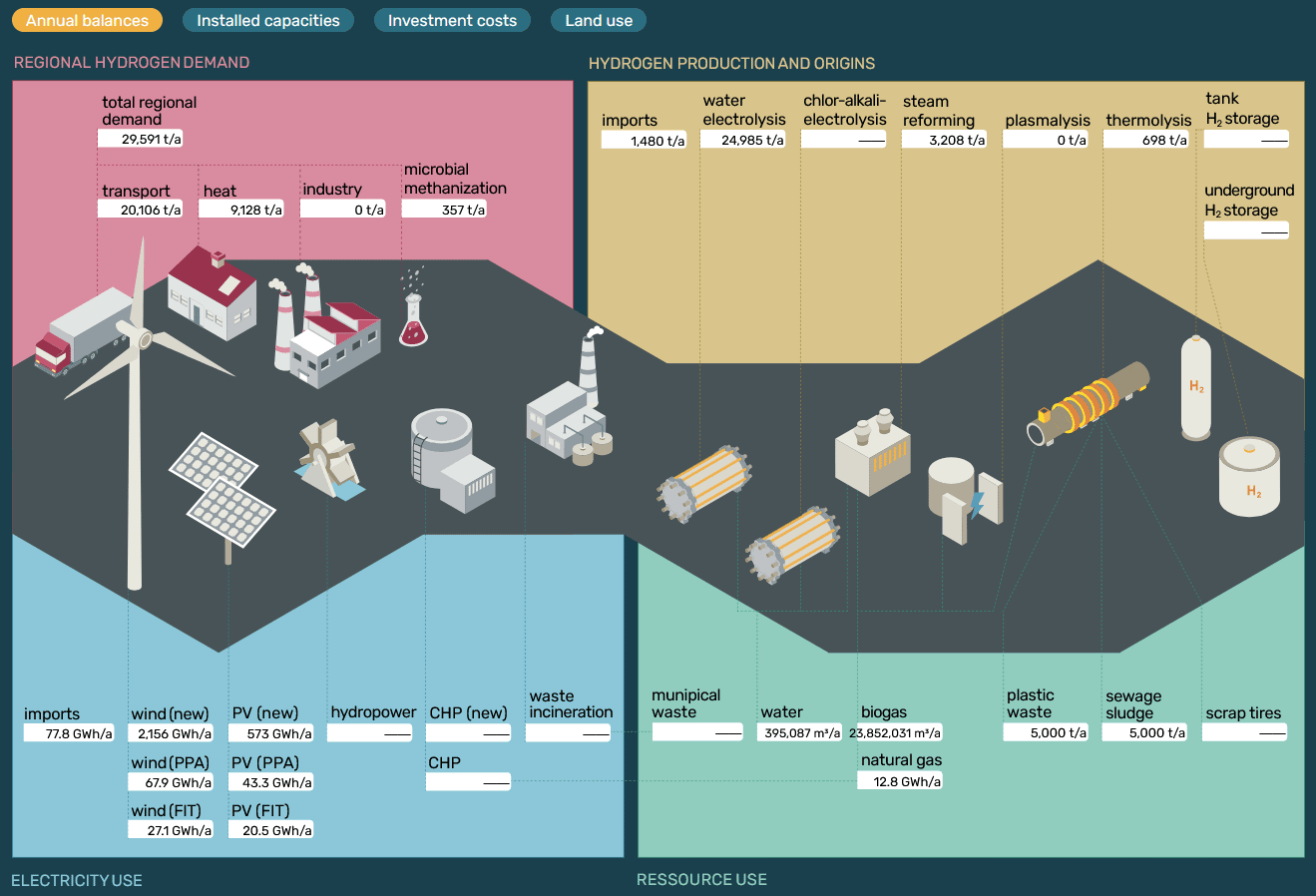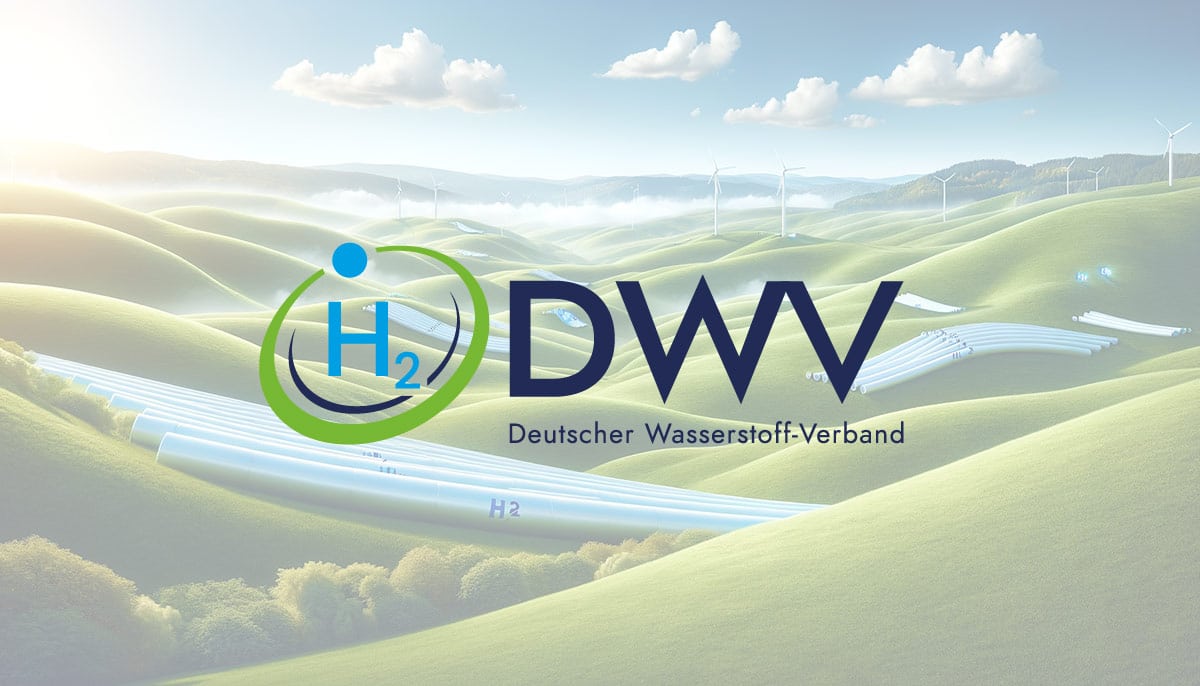Participation in socio-political transformation processes by a wide range of actors is indispensable for success and acceptance of developed solutions. Depending on origin, qualifications and interests, however, many different views may exist as to how to formulate a problem and how to approach it with solutions. An incorporation of all perspectives at an early stage in the decision-making processes shaping the clean energy transition of a region requires the empowerment of regional actors that recognize and understand the technical and economic potential of hydrogen technologies in their respective regional context.
Not only since the current fuel gas crisis has it been clear that key assumptions and framework conditions of the energy transition can change rapidly and solutions that seem attractive today may turn out to be unreliable or economically unfeasible tomorrow. Decisions regarding investment in energy infrastructures with a planned operating period of 15 to 20 years must take into account these uncertainties – so it’s even more important to be able to assess the effects of changing framework conditions.
From this line of thought came, during a cooperation between Spilett New Technologies and actors from the regional district Kreis Steinfurt in 2016, the idea of a scenario calculator tool for Hydrogen Regions. They formulated initial ideas of how regional decision-making processes under uncertain conditions could be better supported, and specified the content and concept requirements. It quickly became clear that a fully parameterizable optimization model would be required that reduces the complexity of the topic for the various target groups (energy industry experts, laypersons) and at the same time delivers sufficiently detailed and robust information for decision-making.
In 2019, the Toyota Mobility Foundation was able to be obtained as a sponsor for the development of the H2 scenario calculator. Under the conceptual direction of Spilett new technologies GmbH, together with the modeling of BBH Consulting AG, software developers at ENDA GmbH & Co. KG and participants of energieland2050 in Kreis Steinfurt, the open-source online tool was developed and validated in the period from 2019 to 2022.
Function of scenario calculator
The hydrogen scenario calculator enables regional decision-makers to, in the first step, identify a cost-optimized H2 infrastructure system through individual configurations (regional energy demand, available resources and government objectives). The aim is to ensure on an hourly basis for a defined target year the hydrogen demand of different sectors under the given regional framework conditions with the goal of security of supply (see Fig. 1).
Fig. 1: Overview of results – cost-optimized infrastructure system
Abb. 1.png
The economic, ecological and social costs, or alternatively benefits, associated with the construction as well as operation of the cost-optimized infrastructure system are broken down and presented in detail in a second step. A two-stage approach was chosen for this purpose:
- Ten key indicators give an overview of the most important economic and ecological performance parameters of the respective infrastructure system (key performance indicators, KPIs, see Fig. 2).
- Information and key indicators itemized by performance area (energy and material flow balances, economic efficiency, societal benefits) deepen the understanding
Fig. 2: The ten key performance indicators of the scenario calculator
Abb. 2.png
The results in the area of energy and material flow balances include annual and periodical overviews of hydrogen and electricity origination as well as their whereabouts at a given time. Here, the filling and withdrawal of hydrogen at regional storage facilities is displayed along with possible imports and exports of electrical power and hydrogen to cover temporary bottlenecks.
Furthermore, the quantities of water required for the production of hydrogen via electrolysis or steam gas reforming are shown, in order to avoid competing uses in times or regions where water resources are scarce. The waste heat generated during the H2 production process is also broken down hourly and serves to support decisions on where to locate production facilities.
The results in the area of economic efficiency include information on key financial performance indicators (e.g. net present value, return on investment, amortization period and turnover), on the hydrogen production costs (broken down by investment costs, fixed and variable operating costs and CO2 costs as well as taxes, fees and levies) and on the utilization rate of the installed plants (in full load hours for each plant).
The results in the area of societal benefits include information on the expected regional value added directly from operation of the infrastructure system (broken down into regional net income, regional profits and regional share of income tax and trade tax) and the amount of CO2 emissions saved through the use of hydrogen as well as the avoided external costs as a result (CO2 emissions, NOx emissions of the transport sector).
Additional function: Stress test
Together with the actors from Steinfurt, a “stress test” function was defined, as a supplement to the main function, which allows quantification of the effects of changing framework conditions on the economic viability and societal benefits after the H2 infrastructure has been put into operation. In a third step, the users of the scenario calculator can themselves identify which economic and ecological consequences there are as a result of changing the regional framework conditions during the up to twenty year operational phase of the H2 infrastructure system. Additionally, this makes it possible to see how much room exists for improving the results of operation.
The changes to basic assumptions of the regional context can be chosen individually or in combination. Their respective impacts on the ten economic, environmental and social system indicators (KPIs) are indicated by the percentage changes to the ideal value, that is the initial value, for better comparability (see Fig. 3).
Fig. 3: Key performance indicators with adjustments in the stress test (external events)
Abb. 3.png
In order for the actors in politics as well as in society to develop an understanding of how the establishment of the regional hydrogen economy can also be actively supported, the stress test also includes the possibility of defining profit expectations and then of seeing based on selected adjusting screws where developments must be steered (target costs or willingness to pay). In Figure 4, as an example, the break-even case for two posed questions is shown.
Fig. 4: Break-even conditions in the willingness to pay of the markets or the reference diesel price
Abb. 4.png
Summary and outlook
The hydrogen scenario calculator has been utilized in the fifteen HyStarter Regions of the HyLand federal support program since the beginning of 2022 and assists the regional actors in their decision-making and in formulation of their respective target systems for year 2030. By informative exchange with the participating regions, the suitability and topicality of the tool was able to be verified. The questions formulated by the Steinfurt actors with respect to the hydrogen economy were confirmed by participating actors in the other regions as being complete and effective for their needs.
The chosen approach of complete parameterization of the input values makes it possible to comprehensively map the current energy crisis by, for example, limiting the availability of natural gas for hydrogen production and flexibly adjusting the energy prices. Also the heat waves and water scarcity experienced in summer 2022 were able to be modelled by a limiting of the water resources and showed the actors alternative paths for electrolytic hydrogen production.
The H2 scenario calculator is to be made available to all interested regions by the end of the year. In the meantime, interested Hydrogen Regions can contact the project team and get a trial access (szenarienrechner@spilett.com).
Authors:
Hölzinger.jpg
Nadine Hölzinger
Spilett n/t GmbH
Andy Fuchs
_MG_0859.jpg
Toyota Mobility Foundation Europe


























0 Comments